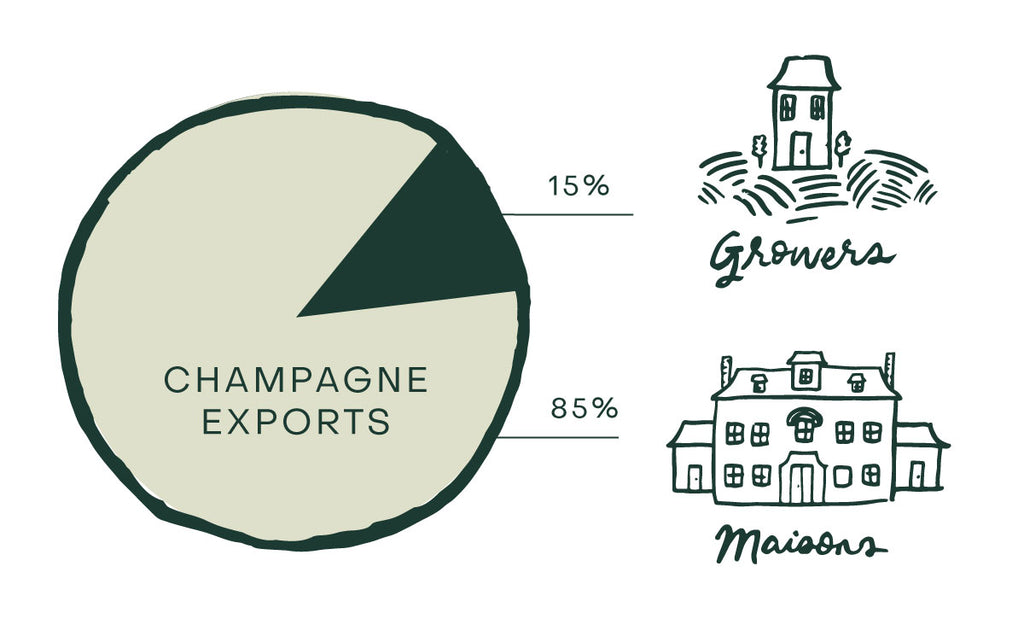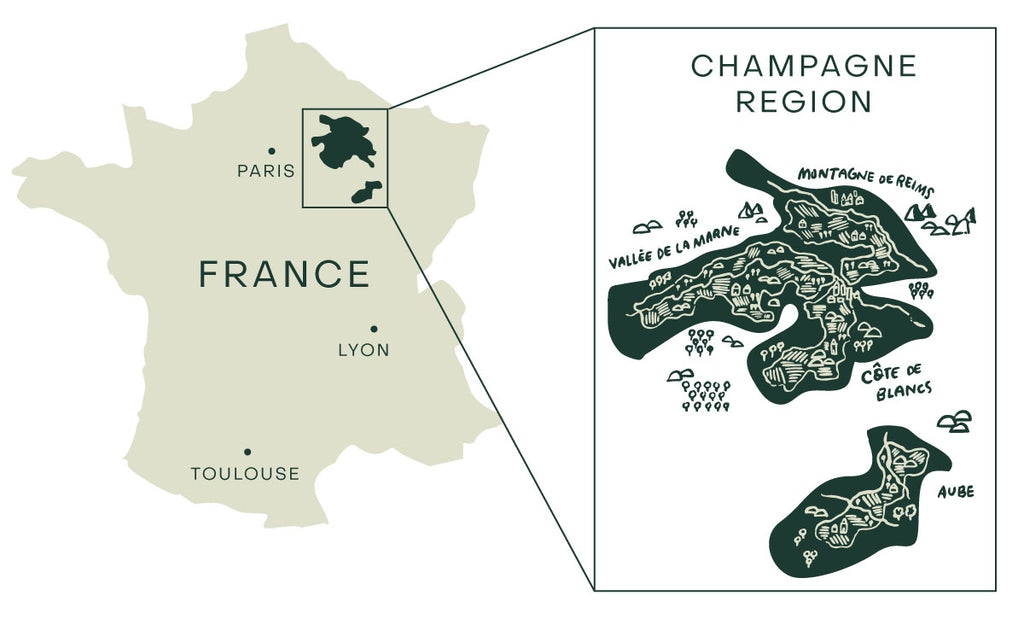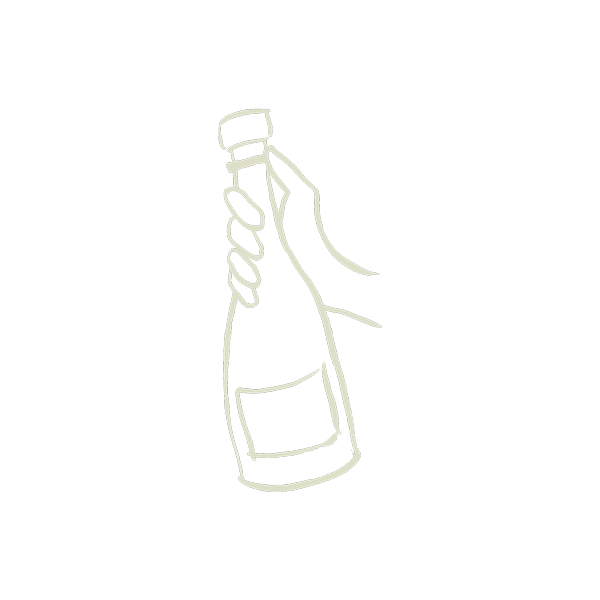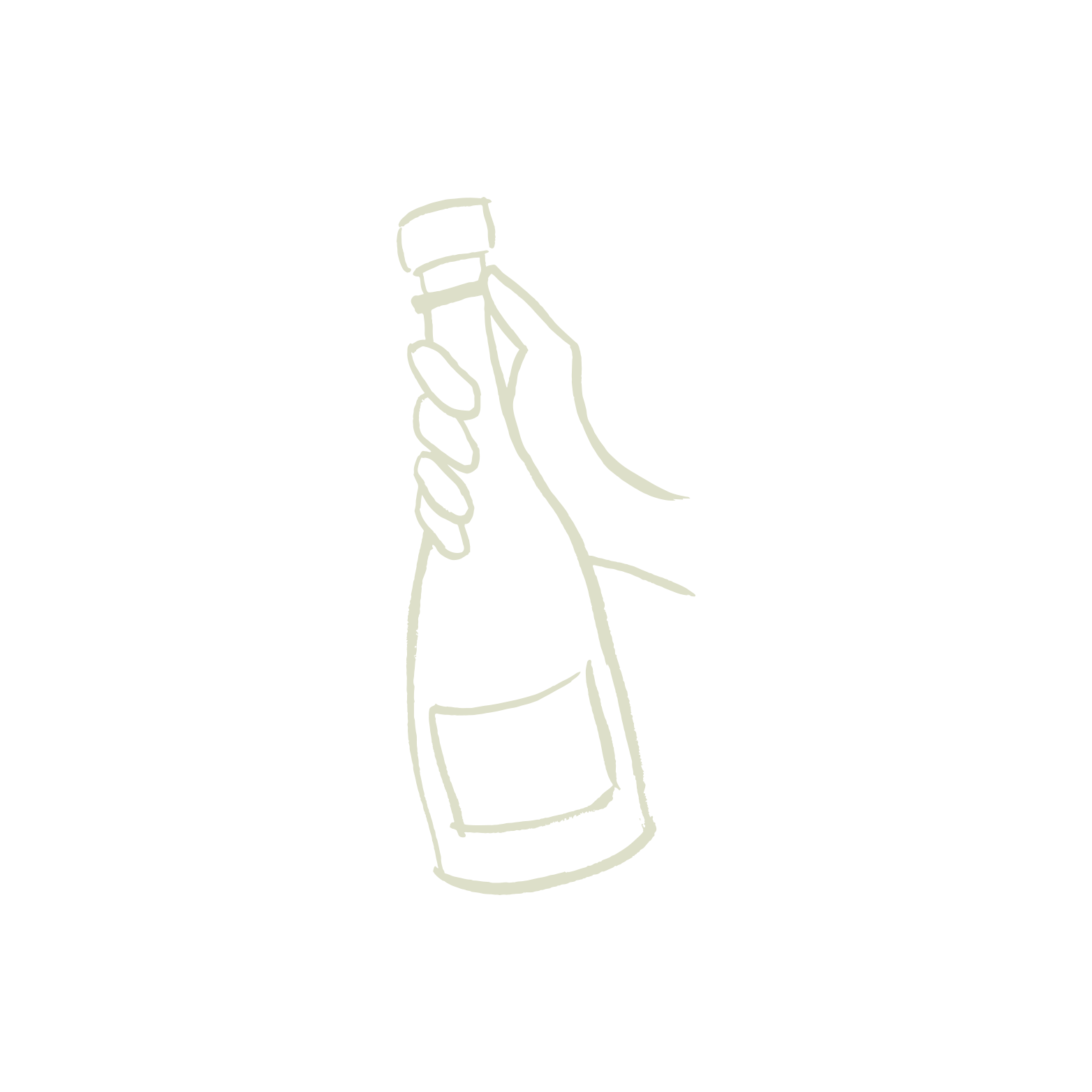Grower Champagne vs. Big House Champagne
Yellow labels have their place, but not at fatcork.
Champagne has long been the darling of American revelers with popular big-house brands like Veuve Clicquot, Moët & Chandon and Dom Perignon popping up for fancy weddings, in exclusive VIP lounges and at New Year’s Eve celebrations from coast to coast. But while those popular labels have their place, Champagne-lovers are increasingly turning to grower Champagne for a sipping experience that is more intimate, authentic and unique.
To make sense of this trend, let’s dive into some of the differences between Champagne houses and grower Champagne.

Big houses, also called “maisons” or “Grandes Marques,” are businesses that make Champagne with grapes sourced from both their own vineyards and those owned by growers across the Champagne region. At each big house (there are 370 in Champagne), a workforce comprising thousands of employees vinifies each vineyard’s grapes separately and then blends the wines to create that brand’s signature taste profile. Big-house Champagne accounts for about 85 percent of total Champagne exports around the world, and they’re readily available at grocery stores and wine shops in the U.S.
Grower Champagne, on the other hand, accounts for only 15 percent of exports, and though it’s gaining popularity outside of France, it can be hard to find in the U.S. Grower Champagne is Champagne produced by people who also grow the grapes and tend the vines. Out of more than 16,200 growers in Champagne, fewer than 5,000 produce their own Champagne with grapes they cultivate on their own land. These small family-run businesses make wines in small quantities with methods that have been passed down through the generations.

The Champagne region itself sits about 100 miles northeast of Paris in an area smaller than New York City. The region is rich with mineral-packed soil — remnants of an ancient marine bed — and features a unique dual climate. The oceanic climate sees steady rainfall and moderate seasonal temperatures, while the continental climate ensures summertime sun but often brings devastating winter frosts. While all Champagne takes advantage of this unique diversity of terroir, only grower Champagne puts it front and center.
Unlike big houses that blend wine to achieve the specific product consumers have come to expect, growers embrace their unique environment, nurturing what nature provides with sustainable and biodynamic practices. The resulting wine is unique and expressive of the individual vineyard from which its grapes come.

Growers may willingly celebrate whatever nature brings to their vineyards, but they maintain complete control over every step of the Champagne-making process from how they grow and harvest the grapes to when and if they blend to what (if any) dosage they add in order to let their grapes shine. They pay careful attention, monitoring the quality of the wine from start to finish to ensure that the bubbles that end up in the glass are the very best they can be.
They may be hard to come by, but these carefully cultivated and crafted grower Champagnes are the only cuvées we carry at fatcork. Like our customers, we love that each and every bottle comes with its own story and that each tastes of where it came from and how it was made. Big-house bubbles may be just fine for some, but those of us who know better are reaching for grower Champagne.

